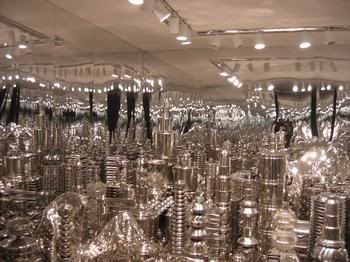Everyone likes shiny things

Here are some statements about Zhan Wang's work by Wu Hong.
Gradually the focus of his experiments shifted from the relationship between stainless-steel rocks and their models to the relationship between these stainless-steel rocks and their environment. From the beginning, his making of these rocks was connected with his critique of Beijing's urban planning and construction. Beginning in the eighties and especially during the nineties, the many high-rises built in Beijing have rapidly transformed the appearance of this ancient city. Mostly adapting Western modern or postmodern styles, these structures also have incorporated certain native elements to make themselves look Chinese. Such "incorporation," however, is often superficial and stereotypical; the two most frequently used formulas are topping a building with a Chinese tile roof or adding some traditional ornamental rocks in the yard. Zhan Wang disagrees with the opinion that Beijing should be kept in its old form, but he is also dissatisfied with the random and undigested borrowing of Western or traditional forms. He hopes to create art forms that can genuinely reflect changes in a traditional Chinese city- works for "today's fast-paced and competitive society," in which "insatiable lust for material wealth takes the place of the detached leisure and comforts favored by intellectuals who adhere to their traditional heritage."




0 Comments:
Post a Comment
<< Home